40+ Physical Therapy CPT Codes: Common, Uncommon, and When to Use Each
There is a slew of medical codes dedicated to this side of healthcare. The average joe doesn’t even know these codes exist. But I’m guessing that you don’t qualify as “average” if you’re here. Maybe you’re a physical therapist yourself, or brushing up on your medical coding knowledge.

Between 2016 and 2021, the insurance industry in the United States received $185.6 billion in revenue. They saw $31.5 billion in profits over the same timeframe. This covers services such as…
- Surgeries
- Dental care
- Medication prescriptions
- Behavioral therapy
- Cancer treatment
- Transplants
- Physical therapy

It’s quite an extensive list. But for the sake of this blog, let’s focus on physical therapy. Many people receive this service at some point in their life. On average, physical therapy clinics get 101 to 200 patients per week.
The reason why someone may need these services will vary. Some people experience injuries while playing sports and need to strengthen their muscles to heal. Or if you’re like me, you may slip and fall on black ice in the parking lot. Hopefully, your injury is no more than a scrape on your knee. But you could also seriously fracture a bone.
Elderly people have a higher chance of experiencing health conditions that would require medical attention. For instance, half of the 1.6 million nursing home residents fall at least once per year. They may also need a joint replacement, or they have limited mobility due to arthritis. A physical therapist can help these people with their mobility-related issues.

You get the point. Genetics, injuries, and aging can all make someone need these services.
There is a slew of medical codes dedicated to this side of healthcare. The average joe doesn’t even know these codes exist. But I’m guessing that you don’t qualify as “average” if you’re here. Maybe you’re a physical therapist yourself, or brushing up on your medical coding knowledge.
Whether you want to learn about the hidden side of healthcare or need to better understand physical therapy medical billing, a good place to start is with common CPT codes.
What Are CPT Codes in Physical Therapy?
If you aren’t too familiar with medical billing yet, you might be wondering what the heck CPT means. Let me explain.
CPT stands for Current Procedural Terminology. These are codes that healthcare providers use to report medical, surgical, and therapy services they perform. CPT codes are maintained and published by the American Medical Association (AMA).
Think of it this way. When doctors evaluate their patients, they know all of the services that they need to perform. But an insurance agent looking at the bill? Not so much. To improve communication between healthcare organizations and insurance agencies, numerical codes represent every different procedure and service.

A healthcare provider encodes all of the services performed into a medical bill using these CPT codes. When the bill reaches the insurance provider, they decode these so that it makes sense in the insurance world.
In essence, the codes describe what happened in the doctor’s office, making it a fundamental part of the billing process. The CPT codes must match the services provided so that the entire workflow and communication are coherent.
Why Physical Therapists, Billers, and Clearinghouses All Rely on Accurate CPT Codes
Accurate CPT codes are essential to keeping the revenue cycle moving smoothly. They affect everyone who is involved in the billing and reimbursement process.
For Physical Therapists
CPT codes represent the specific services therapists performed and help justify why the service was rendered to the insurance payer. When the codes are used correctly, therapists are more likely to receive a quick and fair reimbursement for their services. If codes are used incorrectly that can lead to denied claims, or delayed payments, that can interrupt the revenue cycle.
For Medical Billers
Billers rely on correct CPT codes to create clean claims to be sent to the insurance provider. By using the incorrect codes it will increase the chance of claim denials and resubmissions, which slows down payment and impacts cash flow. Accurate coding improves the first-pass acceptance rates, making the billing process more efficient.
For Clearinghouses
Billing departments use clearinghouses as a critical checkpoint to review claims. Clearinghouses look for any errors that can include the use of incorrect CPT codes. This helps reduce the overall denial rates before the claims are even submitted to the insurance company.
How Does Reimbursement for Physical Therapy Work?
Once the services are coded with a specific code they get sent to the insurance provider. This is when they will review the code and any other additional documentation to help support why the service was provided. After the claim has been reviewed the insurance company determines how much of the total cost they will cover, based on patients benefits and the service provided. Once they determine an amount the insurance company pays the provider their portion of the fee, and the patient is left responsible for the remaining balance, which could range from just a copay or a deductible. It is important to understand that the amount reimbursed can vary depending on the insurance plan, the providers contract with the insurance company, and the specific services rendered.
Common Physical Therapy CPT Codes
Physical therapists receive compensation for their services depending on the coding in the medical bill. Some codes overlap, making it difficult to determine which one to use.
If healthcare providers don’t properly code their medical bills, insurance companies will deny reimbursing the business. The more denials an organization has, the more financial impact there is. On average, it costs $25 to rework one of these denied claims. Only 35% of denials get resubmitted, so providers end up forfeiting a large amount of revenue.
This goes without saying, but physical therapists (and any provider, for that matter) don’t want to lose out on this money. Because of this, organizations need to ensure that they’re using the correct codes.
If you’re new to the billing world of physical therapy, here are 13 common codes that you’ll most likely need to use often in your career.
What Is CPT Code 29240, 29530, 29540 for Strapping?
Strapping is the process of placing adhesive strips to help promote the structure or stability of a joint. Essentially, the strips help provide support so that the joint endures restricted movements while it heals or undergoes strenuous activities.
Several codes involve strapping using similar techniques applied to different parts of the body. This includes shoulders, knees, ankles, or other joints that are prone to injury from getting overworked. These joints may also end up dislocated or reinjured during a difficult exercise.
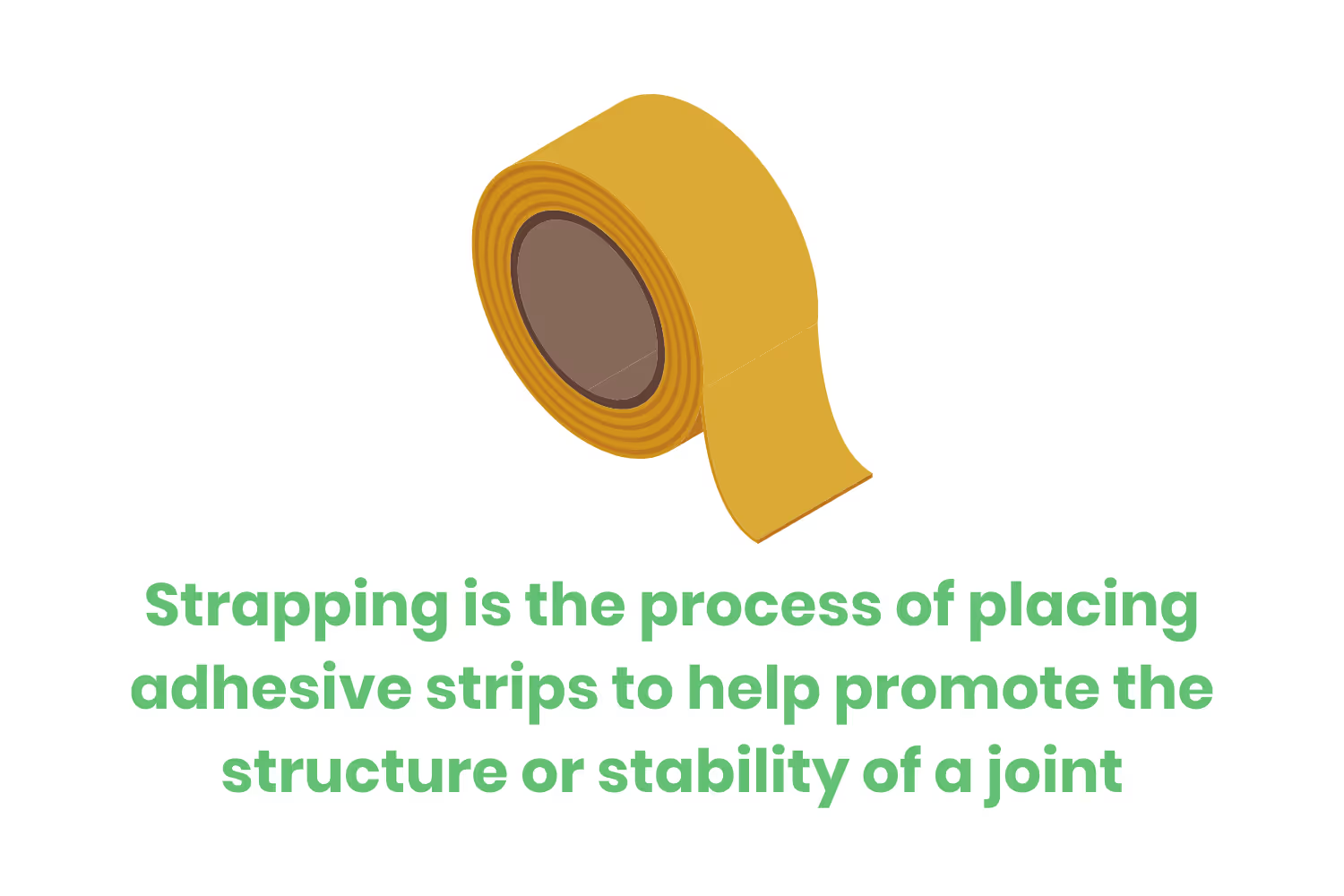
Taping techniques are similar and provide added stability, immobility, or promote comfort for a patient if needed. For instance, a therapist may use McConnell tape since it’s more rigid and helps stabilize the joint.
It’s important to note that this code doesn’t involve any use of plaster to create the same effect as tape. It also doesn’t involve kinesiotaping techniques that promote movement. Instead, kinesiotaping falls under neuromuscular re-education. I’ll discuss that more in a bit.
What Does CPT Code 97110 Cover for Therapeutic Exercise?
This is any type of exercise that develops strength and endurance in one or more areas. The exercises also help with range of motion and flexibility.
They get billed in 15-minute increments following the 8-minute rule. This means that a physical therapist cannot bill for this code until the service lasts for at least 8 minutes. And they can only bill for a single unit unless they provide the service through 22 minutes.
An important parameter of this code is that there is direct contact time with the patient. This code often gets confused with therapeutic activity. On the billing side of things, there’s a significant difference between the two. Therapeutic activity receives a higher average reimbursement rate from insurance companies compared to therapeutic exercise. Each session may only get a few dollars more, but that adds up over a year.
The reimbursement difference is due to skill. Therapeutic exercise usually requires less skill compared to therapeutic activities or neuromuscular re-education. From an insurance company perspective, therapeutic exercise doesn't require as much effort.
They assume that therapists can provide the services without as much of a hands-on approach, such as by having the patient ride a stationary bike for 15 minutes. Because the insurance companies view these as requiring less effort and skill, they also agree that it deserves less compensation.
What Is CPT Code 97112 for Neuromuscular Re-Education?
Neuromuscular re-education includes activities that help restore function by retraining the brain on how to control muscles. Think of it as exercises that help the brain communicate to the muscles how to function and move.
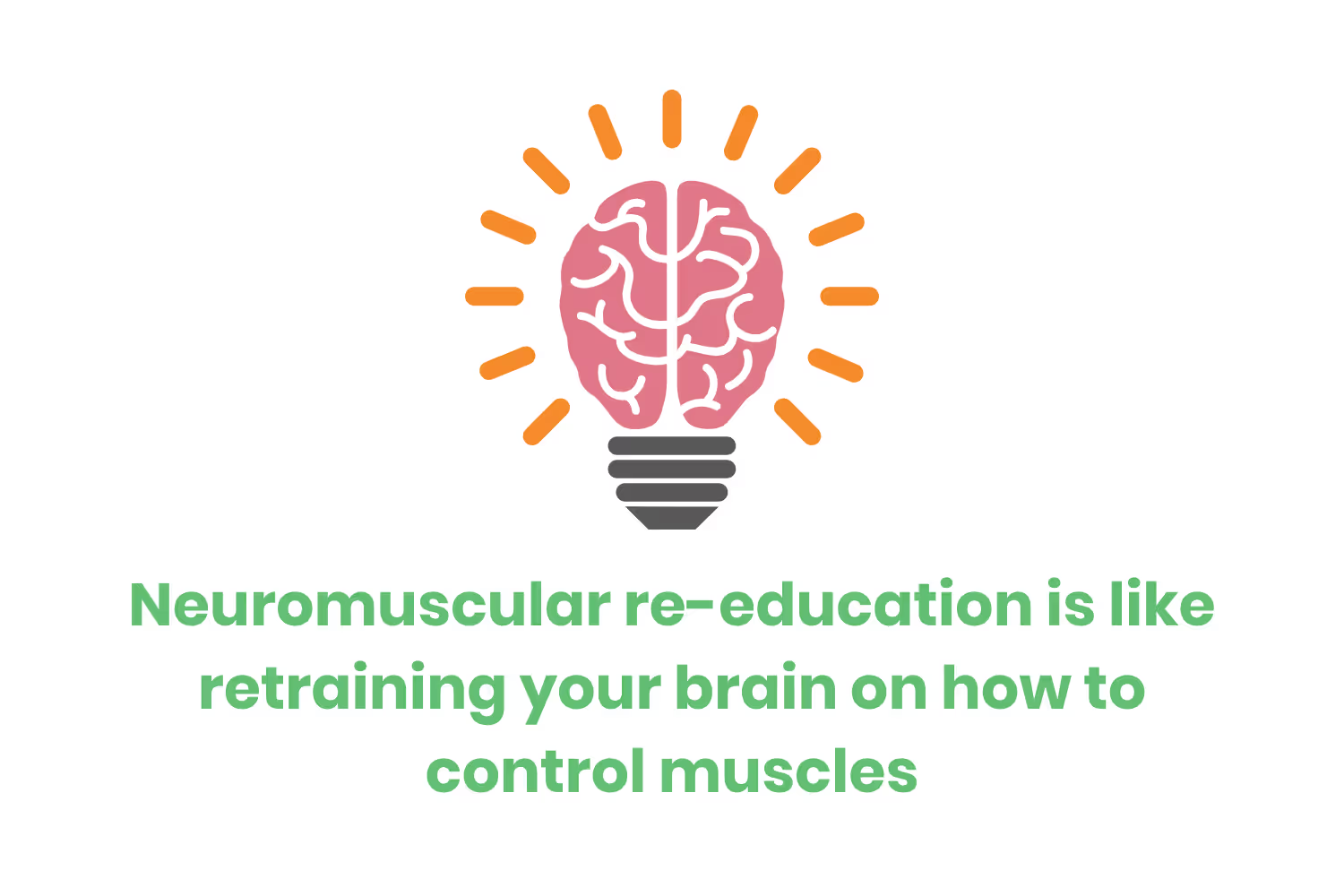
Again, these activities get billed in 15-minute units using the 8-minute rule.
The purpose of neuromuscular re-education is to help someone with their posture, movement, balance, coordination, and kinesthetic sense. It also includes proprioception for sitting and/or standing activities.
Time spent on the following also counts as relevant activities for this code…
- Kinesiotaping
- Performing stabilization exercises
- Ergonomic training
- Facilitation or inhibition
- Desensitizing the muscles
- Improving motor control
- Plyometrics
When I say desensitizing the muscles, this includes a variety of activities. For example, someone could roll their back on a piece of foam to alleviate pain. Another form of desensitization could include massaging an area of the body to increase blood flow, making the joints less stiff. These simulations and exercises count towards this specific CPT code.
What Is CPT Code 97116 for Gait Training?
Gait training involves exercises designed to help a patient stand and walk. The intention is to strengthen muscles and joints in someone’s legs, improve balance and posture, and build endurance. The goal of this is also to improve muscle memory and retrain leg movements using repetitive motions.
By the end of the physical therapy sessions, the purpose is to have lowered someone’s risk of falling and increased their mobility in walking comfortably.
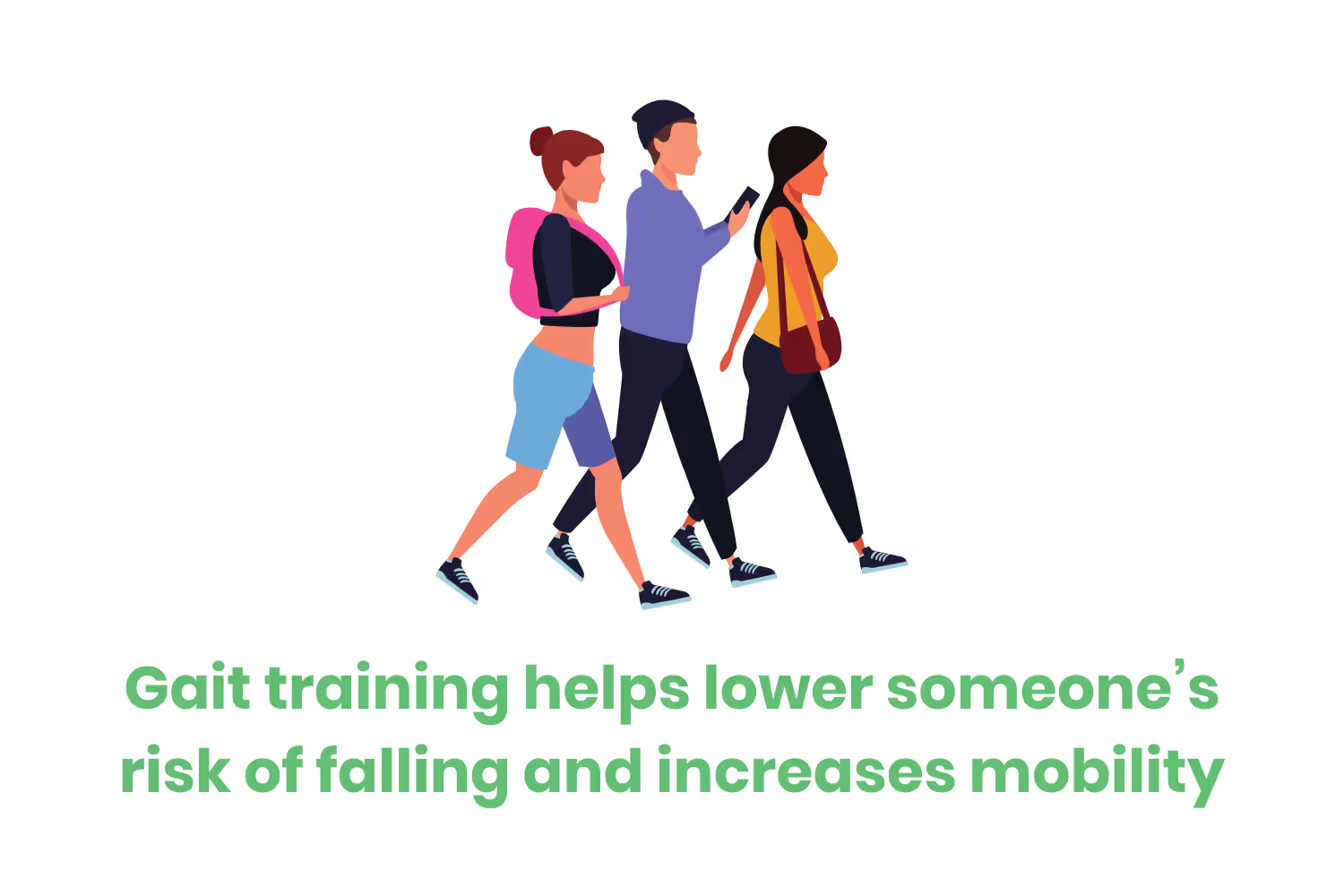
Common reasons people need gait training include…
- Broken leg
- Broken pelvis
- Joint replacement
- Stroke
- Neurological disorders
- Musculoskeletal disorders
- Spinal cord injuries
- Brain injuries
These types of exercises often use machines that specifically help the person walk safely. The machines help support body weight, provide stability, and other forms of assistance while someone learns to develop strength and balance.
Physical therapists also have their patients use strength-building machines, ellipticals, and treadmills to target this kind of training. They may also use a harness to help with balance while the patient relearns movements of walking. Walking over objects, lifting legs, sitting down/getting back up, or other activities can all help train the muscles to increase mobility.
What Does CPT Code 97140 Mean for Manual Therapy?
The Free Dictionary defines manual therapy as “direct patient contact mobilization designed and performed by a licensed physical therapist (PT) or supervised assistant.” The purpose is to restore joint or soft tissue mobility, reduce joint contracture, and increase muscle energy.
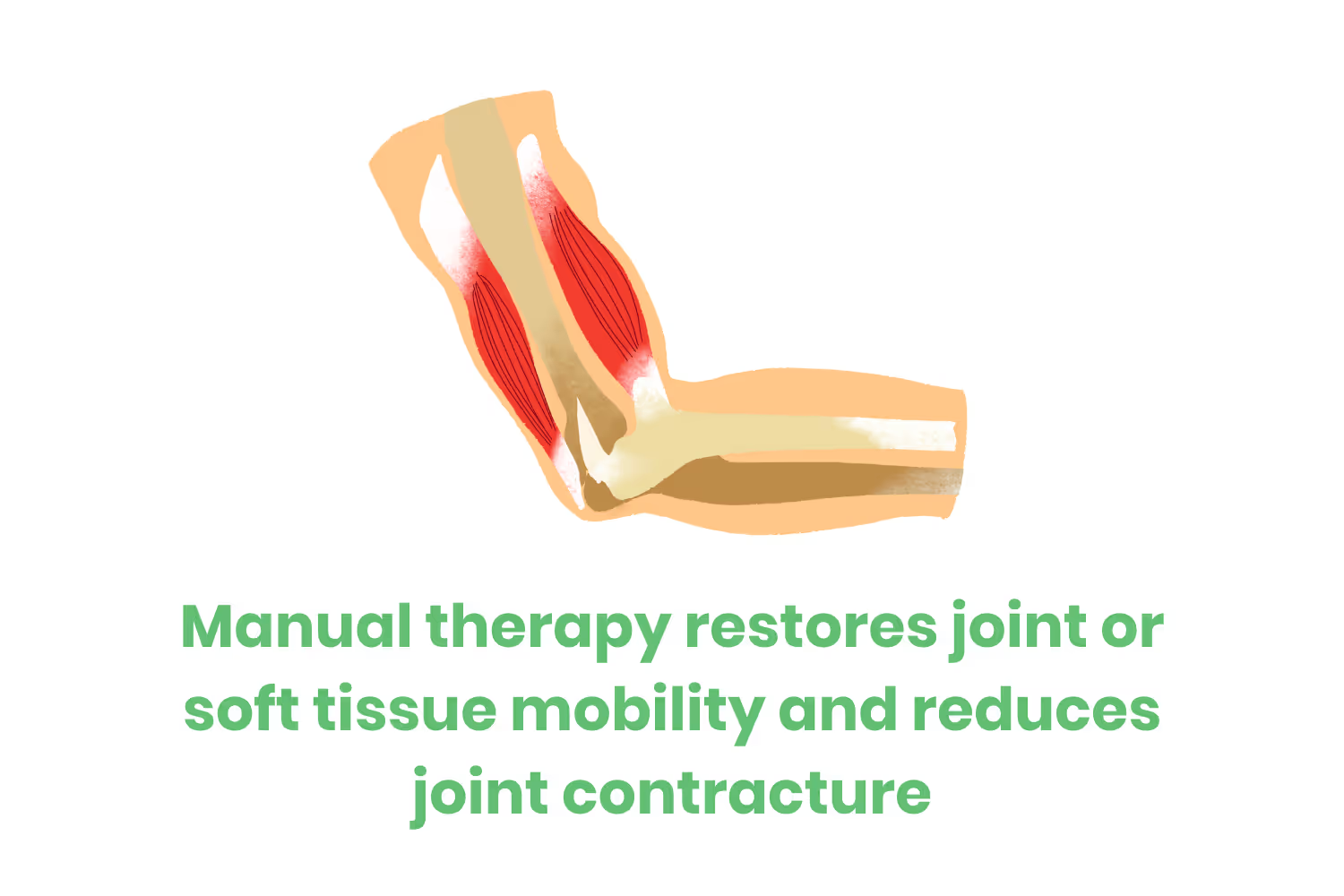
Therapists accomplish this by applying resistance and pressure. As such, the code includes anything deemed as “manual resistance exercise” since the goal is to improve strength and endurance, therefore increasing the energy of the muscle.
But physical therapists are not massage therapists. Therefore, the reimbursement of manual therapy occurs at a lower rate compared to other codes. Physical therapists are training in exercise prescription and load management. Manual therapy can be effective when used to complement a well-thought-out exercise program.
What Is Group Therapy CPT Code 97150?
“Group” refers to giving therapy to two or more patients at the same time. It doesn’t include one-on-one time with each of the participants. The patients may or may not be doing the same exercises simultaneously.
The activities of this code could occur in various environments such as a gym-like setting or a pool. Because there are several patients, this type of treatment requires the physical therapist or the assistant to provide constant supervision.
What Does CPT Code 97530 Cover for Therapeutic Activities?
I already mentioned a bit about therapeutic activities, but this code consists of services that have direct contact with the patient. The activities improve the functional performance of muscles, ligaments, and other tissues in the body.
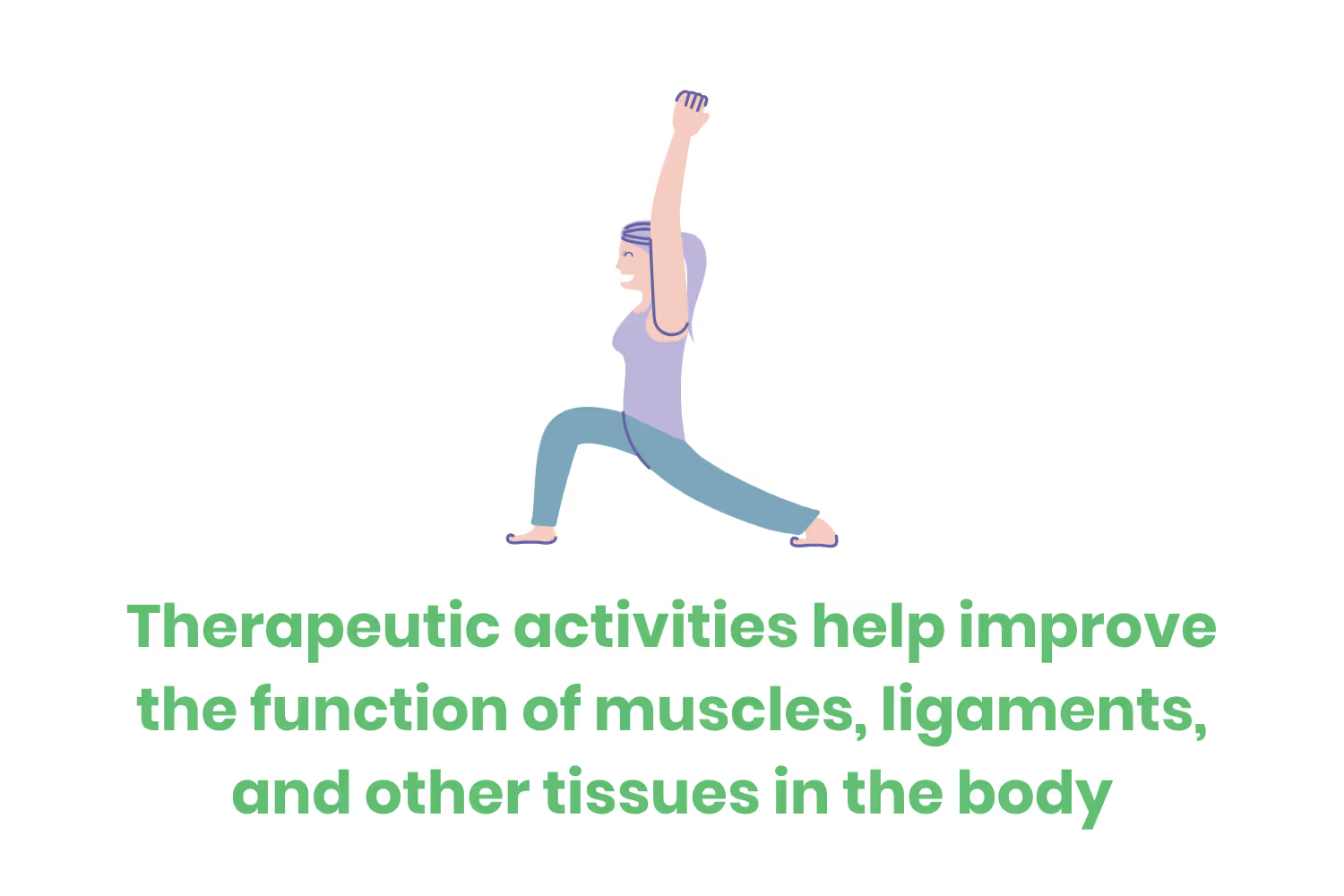
These exercises are “dynamic” because they require the patient to practice movements that require strength, balance, and flexibility. The repetitive movements help with muscle memory, ensuring that someone can perform the movements safely when they are not in therapy.
These “dynamic” activities can include…
- Sitting, moving to stand position, then sitting back down
- Bed mobility, including practice getting in and out of bed safely
- Practicing going up and downstairs
- Hip-hinge training
- Squatting to improve balance and make the muscles stronger
- Throwing a ball to help improve arm movement, muscle strength, and muscle memory
- Swinging a bat or golf club
- Practice getting in and out of a vehicle
- Lifting heavy objects using proper form (use your legs, not your back!)
These types of training exercises require a highly skilled physical therapist. The professional needs to be able to correct the movements and assist the patient so that they don’t injure themselves and to help them master the proper movements.
Again, the reimbursement of this CPT code occurs at a higher rate than therapeutic exercise because it requires more knowledge.
What Is CPT Code 97535 for Self-Care and Home Management Training?
Imagine you experienced an injury that prevents you from living independently either temporarily or permanently. Maybe you broke both your arms, are learning to use a prosthetic, or you had a double knee replacement.
Self-care and home management training are exercises that help a patient improve their capacity to live independently.
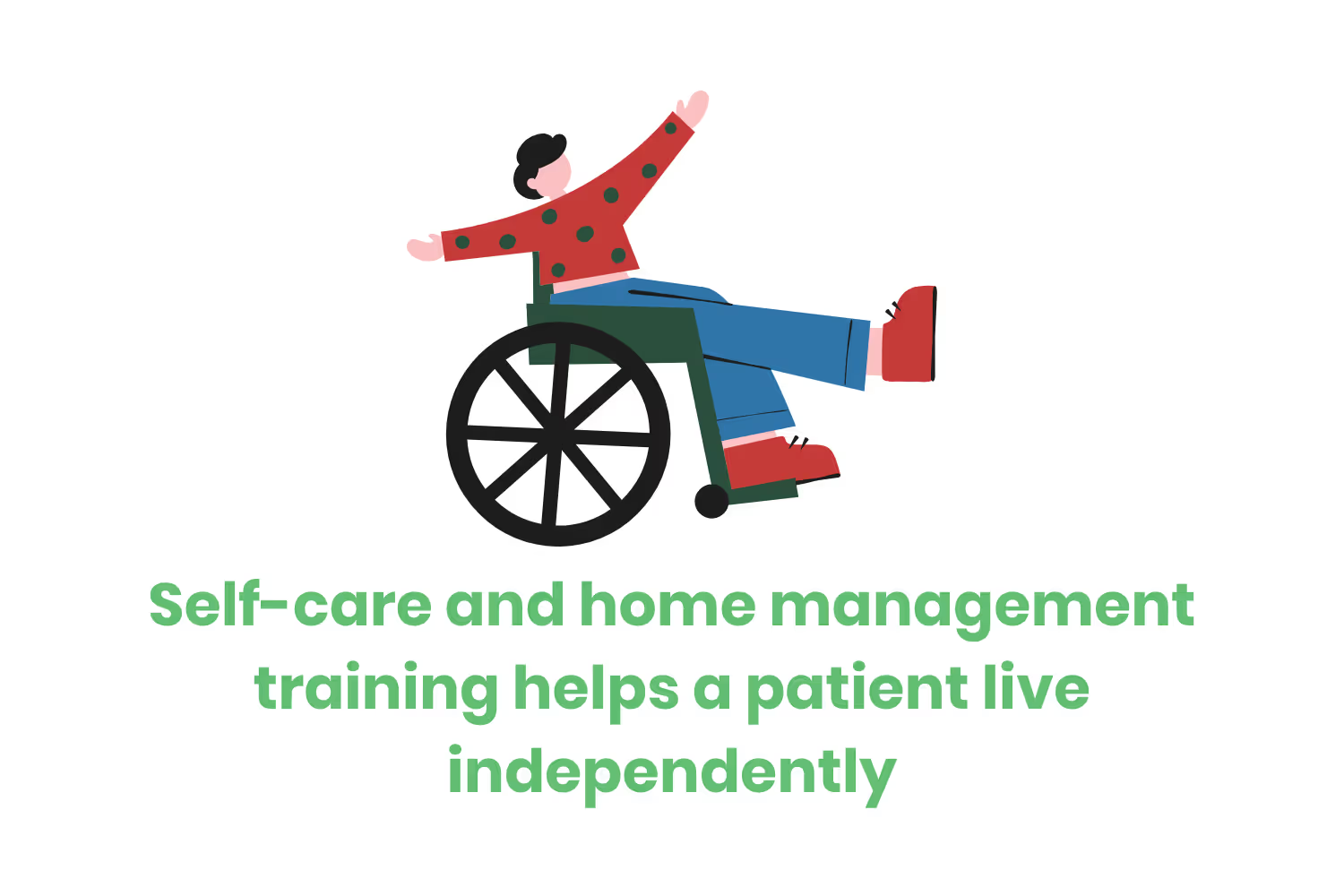
Sessions may teach how to properly use assistive devices like a walker. They could also educate on safe muscle compensation so patients have positive long-lasting effects.
This CPT code also encompasses activities of daily living (ADL). ADL training aims to strengthen muscles and improve endurance, flexibility, and balance. It’s specifically designed to help someone with bathing, eating, using the lavatory, getting dressed, and “transferring”.
When I say transferring, I mean physically moving your body to accomplish activities like…
- Getting in and out of a bed
- Comfortably getting into and out of a vehicle
- Moving to and from a wheelchair
What Does CPT Code 97750 Cover for Physical Performance Testing?
Physical therapists need to understand the severity of a patient’s situation before deciding what services they need. To accomplish this, they test different functions of multiple parts of the body to determine physical performance.
Common tests and measures include…
- Functional assessments
- Functional capacity evaluations
- Cybex testing
- Sensory tests
- Pinch tests
- Grip tests
- Sport-related tests
- Video analysis of gait, throwing or running
- Exertional testing
Measuring joint range could also fall under this CPT code since it measures a part of how someone can function. However, some physical therapists don’t include that service under this code. Instead, they reserve billing for that service when administering functional assessments at any point after an initial evaluation.
What Is CPT Code 97761 for Prosthetic Training?
This CPT code involves training with a prosthetic limb. A patient needs to learn how to move properly with their new limb. Someone with a new leg would need to get used to walking, running, sitting, balancing, and standing with their prosthetic. Or if they have a new arm, they’d need to learn how to write, hold an object, wave, or grip.

This code doesn’t only involve training on how to use it, though. It also includes assessment for the prosthetic, fitting the patient for the limb, and teaching on how to remove it when needed. However, the time it takes to create the prosthetic does not fall within this code for billing purposes.
What Is CPT Code 97762 for Orthotic or Prosthetic Checkout?
Although related to the previous code, checkout of orthotics or prosthetics involves evaluating the effectiveness of an existing device. A professional may recommend a change in the device or could determine a slight adjustment of the current one if it’s necessary.
What Are Some Less Common Physical Therapy CPT Codes?
Of course, there are so many more medical codes than the ones I already listed. These are just the most common that physical therapists use often. While others aren’t as common, it’s still worth knowing what they are since physical therapists may end up using them at some point.
Here’s a list of codes that you will most likely come across during your career, just not as often as the ones above.
- 97010: Hot or cold packs therapy
- Application of thermal energy for relief in one or more areas of the body
- Used to improve circulation, decrease swelling, or relieve pain in conjunction with other procedures
- 97012: Mechanical traction therapy
- Application of mechanical energy to provide relief in one or more areas of the body
- Used to improve circulation, decrease swelling, relieve pain, deliver medication, or reduce muscle spasms in conjunction with other procedures
- 97014: Electric stimulation therapy
- Application of electrical energy to provide relief in one or more areas of the body while the patient is not actively attended
- Used to improve circulation, decrease swelling, relieve pain, deliver medication, or reduce muscle spasms in conjunction with other procedures
- 97016: Vasopneumatic device therapy
- 97018: Paraffin bath therapy
- Using thermal energy in the form of warm water or wax to reduce pain and tenderness in hands while maintaining muscle strength
- 97022: Whirlpool therapy
- Using thermal heat through warm water to decrease swelling, promote wound healing, improve motion, decrease pain, decrease muscle spasms
- 97024: Diathermy
- 97026: Infrared therapy
- Using infrared light to decrease swelling, promote wound healing, improve motion, decrease pain, decrease muscle spasms
- 97028: Ultraviolet therapy
- Using ultraviolet light to decrease swelling, promote wound healing, improve motion, decrease pain, decrease muscle spasms
- 97032: Electrical stimulation
- Using manual electrical stimulation to decrease swelling, promote wound healing, improve motion, decrease pain, decrease muscle spasms
- 97033: Electric current therapy
- Often referred to as Iontophoresis
- 97034: Contrast bath therapy
- 97035: Ultrasound therapy
- Using ultrasound to decrease swelling, promote wound healing, improve motion, decrease pain, decrease muscle spasms
- 97036: Hydrotherapy
- Often referred to as Hubbard Tank
- 97113: Aquatic therapy/exercises
- Using water to relieve stress on joints while performing exercises, each lasting 15 minutes
- 97124: Massage therapy
- Massage, including striking, compression, and percussion, to one or more areas of the body
- 97127: Therapeutic interventions with a focus on cognitive function
- 97139: Physical medicine procedure
- 97151: Behavioral identification assessment
- 97153: Adaptive behavior treatment by protocol
- 97154: Group adaptive behavior treatment by protocol
- 97155: Adaptive behavior treatment by protocol (modification)
- 97156: Family adaptive behavior treatment guidance
- 97157: Multi-family adaptive behavior treatment guidance
- 97542: Wheelchair Management
- Includes assessment of the device, fitting the wheelchair for the patient, and training related to movements in the chair and transferring to and from the chair
- 97158: Group adaptive behavior treatment
- 97750: Physical performance test
- 97755: Assistive technology assessment
- 97760: Orthotic management and training, first encounter
- Includes the assessment and fitting if not specifically reported.
- Can include upper extremities, lower extremities, and/or trunk
- 97761: Prosthetic training, first encounter
- Training the body on how to behave with a prosthetic
- 97762: Orthotic/Prosthetic Checkout
- An established patient obtaining the orthotic or prosthetic for use
- 97763: Orthotic/prosthetic management, subsequent encounters
Conclusion
Reimbursement of different CPT codes occurs at different rates depending on the skill and time needed to complete the therapy exercises. Some activities are hands-on and require more knowledge from the professional. Other exercises are more passive and don’t need the therapist to actively help the patient complete the exercise.
The codes must match the corresponding services because if they don’t, they could get rejected by the insurance company. When they end up denied, the provider loses money and it delays revenue.
Between 2016 and 2021, physical therapists saw $38.3 billion in revenue. However, there was a 5.7% profit decrease. For them to keep a positive growth for revenue and profit, they need to focus on using correct CPT codes. Otherwise, denials will negatively impact their finances.
Emphasize your product's unique features or benefits to differentiate it from competitors
In nec dictum adipiscing pharetra enim etiam scelerisque dolor purus ipsum egestas cursus vulputate arcu egestas ut eu sed mollis consectetur mattis pharetra curabitur et maecenas in mattis fames consectetur ipsum quis risus mauris aliquam ornare nisl purus at ipsum nulla accumsan consectetur vestibulum suspendisse aliquam condimentum scelerisque lacinia pellentesque vestibulum condimentum turpis ligula pharetra dictum sapien facilisis sapien at sagittis et cursus congue.
- Pharetra curabitur et maecenas in mattis fames consectetur ipsum quis risus.
- Justo urna nisi auctor consequat consectetur dolor lectus blandit.
- Eget egestas volutpat lacinia vestibulum vitae mattis hendrerit.
- Ornare elit odio tellus orci bibendum dictum id sem congue enim amet diam.
Incorporate statistics or specific numbers to highlight the effectiveness or popularity of your offering
Convallis pellentesque ullamcorper sapien sed tristique fermentum proin amet quam tincidunt feugiat vitae neque quisque odio ut pellentesque ac mauris eget lectus. Pretium arcu turpis lacus sapien sit at eu sapien duis magna nunc nibh nam non ut nibh ultrices ultrices elementum egestas enim nisl sed cursus pellentesque sit dignissim enim euismod sit et convallis sed pelis viverra quam at nisl sit pharetra enim nisl nec vestibulum posuere in volutpat sed blandit neque risus.

Use time-sensitive language to encourage immediate action, such as "Limited Time Offer
Feugiat vitae neque quisque odio ut pellentesque ac mauris eget lectus. Pretium arcu turpis lacus sapien sit at eu sapien duis magna nunc nibh nam non ut nibh ultrices ultrices elementum egestas enim nisl sed cursus pellentesque sit dignissim enim euismod sit et convallis sed pelis viverra quam at nisl sit pharetra enim nisl nec vestibulum posuere in volutpat sed blandit neque risus.
- Pharetra curabitur et maecenas in mattis fames consectetur ipsum quis risus.
- Justo urna nisi auctor consequat consectetur dolor lectus blandit.
- Eget egestas volutpat lacinia vestibulum vitae mattis hendrerit.
- Ornare elit odio tellus orci bibendum dictum id sem congue enim amet diam.
Address customer pain points directly by showing how your product solves their problems
Feugiat vitae neque quisque odio ut pellentesque ac mauris eget lectus. Pretium arcu turpis lacus sapien sit at eu sapien duis magna nunc nibh nam non ut nibh ultrices ultrices elementum egestas enim nisl sed cursus pellentesque sit dignissim enim euismod sit et convallis sed pelis viverra quam at nisl sit pharetra enim nisl nec vestibulum posuere in volutpat sed blandit neque risus.
Vel etiam vel amet aenean eget in habitasse nunc duis tellus sem turpis risus aliquam ac volutpat tellus eu faucibus ullamcorper.
Tailor titles to your ideal customer segment using phrases like "Designed for Busy Professionals
Sed pretium id nibh id sit felis vitae volutpat volutpat adipiscing at sodales neque lectus mi phasellus commodo at elit suspendisse ornare faucibus lectus purus viverra in nec aliquet commodo et sed sed nisi tempor mi pellentesque arcu viverra pretium duis enim vulputate dignissim etiam ultrices vitae neque urna proin nibh diam turpis augue lacus.




